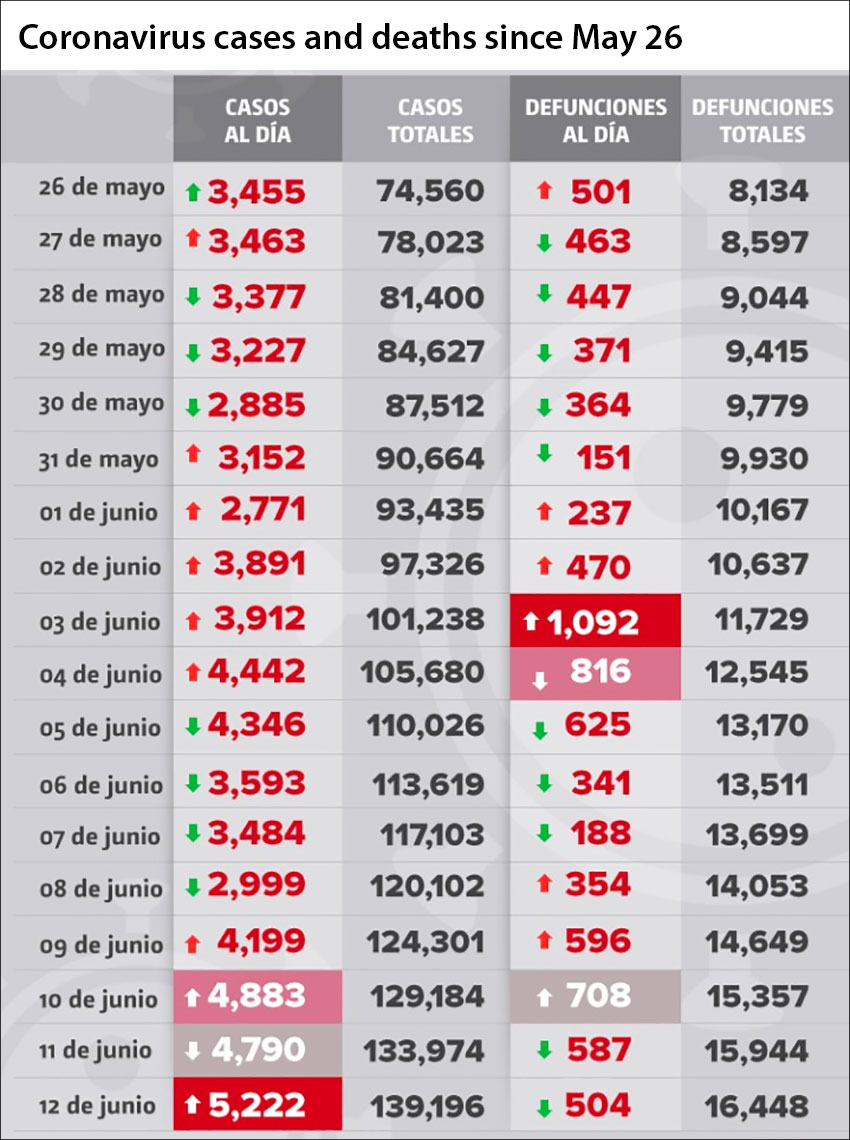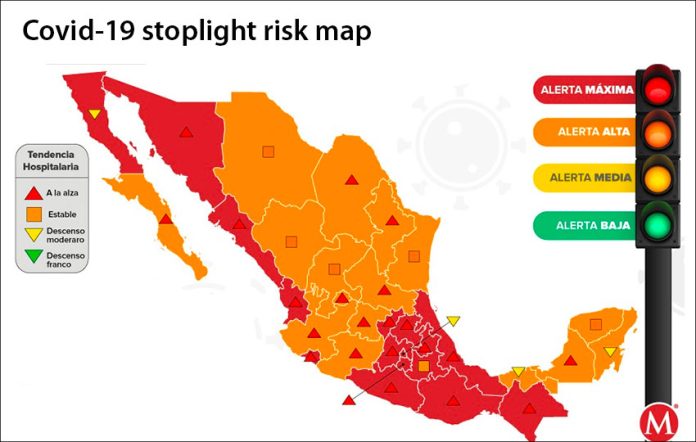Health authorities presented a new coronavirus “stoplight” map yesterday that will allow half of the country to begin to ease coronavirus restrictions as of Monday.
The previous map showed the entire country painted red, meaning that all 32 states were at “maximum risk” for contagion. The new map has 16 states at the orange level, meaning there is a “high level” of risk for transmission of the virus. One of the reasons for the change is that federal health officials have reevaluated their criteria.
The stoplight map assesses states based on four factors: case number trends (whether new infections are increasing, decreasing or stable), hospital admission trends for coronavirus patients, hospital occupancy levels and positivity rates (the percentage of people tested who are confirmed to have Covid-19).
Previously, if a state was deemed to be at maximum risk in any one of the four indicators, the state earned a blanket red designation.
This didn’t sit well with governors of several states. Jalisco’s Enrique Alfaro questioned the federal government’s criteria, methodology and intentions after his state was painted red at the end of May.

He declared that it was “absurd” that his state should be given a red designation when only one of the four indicators was red.
Mexico’s coronavirus point man, Deputy Health Minister Hugo López-Gatell, said Friday that after discussions with state governors the federal government is assessing the classification differently.
Hospital occupancy now carries a weight of 50%, case numbers and hospital admission trends 20% each and the number of new cases 10%.
The 16 states rated at the orange alert level are Aguascalientes, Baja California Sur, Campeche, Chihuahua, Coahuila, Durango, Guanajuato, Jalisco, Michoacán, Nuevo León, Quintana Roo, San Luis Potosí, Tabasco, Tamaulipas, Yucatán and Zacatecas.
Despite the federal government’s classification of Mexico City as red and at maximum risk, Mayor Claudia Sheinbaum announced plans to transition to orange on Monday.
Federal health authorities reiterated that state and local governments will ultimately define what activities can resume, but under the federal definition nonessential activities can begin again and public spaces such as parks and beaches can be reopened but at limited capacity.
The news comes as the number of coronavirus cases continues to rise. As of Friday, Mexico had 139,196 confirmed cases, an increase of 5,222 over the previous day, and 16,448 people had died. An additional 504 fatalities were recorded yesterday.
Health officials report that 46% of the country’s hospital beds are occupied and 38% of its beds with ventilators are in use.
Source: El Universal (sp), Animal Politico (sp)
